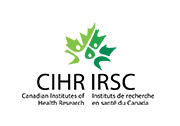- Anti-racism, like cultural safety, is both a process and an outcome. Anti-racism requires continual efforts at all levels of the organization to ensure that people who identify as Indigenous including those working as employees feel respected and welcome. Strategies to eliminate anti-Indigenous racism are aligned with the goals of cultural safety, and require an understanding of the structural causes of racism, discrimination, and stigma.
- For example, Indigenous people are often subject to multiple intersecting forms of racism, discrimination and stigma, including gender-based discrimination, and stigma related to substance use and substance use health, regardless of whether or not they use/d substances. Anti-racism, anti-stigma, and gender-based equity strategies are therefore intertwined and essential to close the health equity gap.
- Anti-racism is a health equity practice. It involves changing the practices, policies, and structures within organizations to actively counter racism
- Racism exists throughout every facet of our society. Racist and colonial
policies, practices, and behaviours are fundamental causes of ill health. - In Canada, anti-Indigenous racism creates harms for Indigenous people stemming from colonial violence, oppression, negative health care experiences, decreased access to care, poorer quality of care, and often poor health outcomes.
- Anti-racism aims to counteract the harms of racism, discrimination, and stigma, and mitigate the potential harms and lack of safety that people may experience as they seek help. The goal is to do so by fostering approaches to care (e.g., principled interventions based on peoples’ preferences, priorities and values) to help people feel safe, comfortable, and welcome.
- Cultural safety was originally developed in the 1990s in New Zealand by Māori nurse-leaders who saw the need to move the focus of attention beyond ‘cultural sensitivity’ to counteracting the harms of systemic racism and other forms of discrimination in healthcare. Cultural safety is about decolonizing services, systems and policies to mitigate the potential harms, traumas and lack of safety that people experience in healthcare and other
settings.1 - Cultural safety places responsibility for creating safety on service providers; however, whether or not services are safe is determined only by those receiving services.
1 Browne, A. J., & Varcoe, C., and Wytenbroek, L. (2022). Chapter 3: A Relational Approach to Cultural and Social Considerations in Health Assessment. In A. J. Browne, J. MacDonald-Jenkins, & M. Luctkar-Flude (Eds.), Physical Examination and Health Assessment by C. Jarvis (4thrd Canadian Edition) (pp. TBA). Elsevier.



